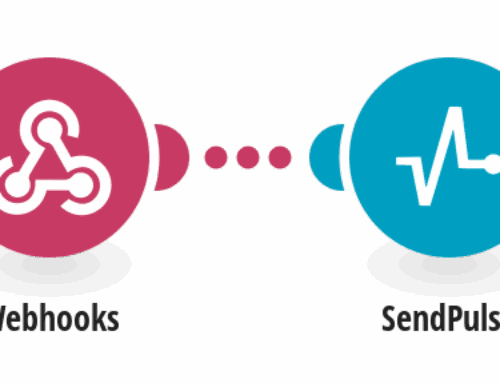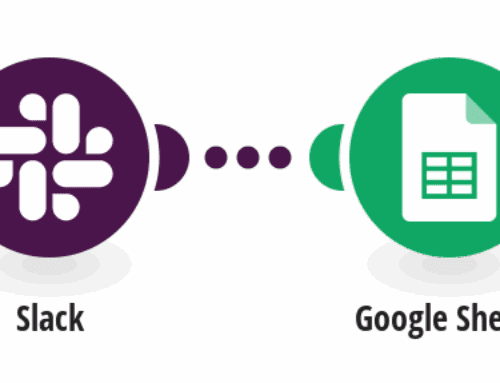The world is changing at an unprecedented pace. Now that so many people are connected via social media, the reach of a business and its brand has never been greater. That being said, not every business will be able to take advantage of this new era. If you operate a small or niche business that doesn’t have the resources to adapt, you might struggle to succeed in this new digital age.
But there is hope for businesses of all shapes and sizes. You just need to use the right strategy to achieve success in a no-code workflow for your business.
No Code Workflow For Your Small Business
If you operate a small business, you might be concerned that no-code workflows aren’t right for you. This is understandable because, while they are a good choice for many businesses, they may not be suitable for small ones. But that’s not to say you can’t make a no-code workflow work for your business.
The no-code workflow is essentially a way to build your digital products and services without writing any code. In the past, digital product development required that businesses rely on freelancers who could offer specialized skills in code. While that still works in many cases, it’s an expensive and time-consuming process. The no-code workflow has the potential to streamline digital product development.
It can also accelerate the creation of new products and services. What’s more, it can save your business money and time. The no-code workflow is particularly effective for businesses with specific needs. For example, a law firm that specializes in business law may need to use custom software. In this case, a no-code workflow is a great fit.
Examples of No Code Workflow
Request Management
Every business has customers who want to buy products or services. You want to make sure you process these requests promptly. If you don’t have a system in place to manage this, you’ll find yourself going through stacks of paper and spending excessive amounts of time on each request.
A workflow can be used to manage the process of receiving customer requests. You want to make sure you have a filing system in place to manage these requests. With a workflow, you can ensure your filing system is up to date and filing requests are being completed.
You can also use a workflow to manage the process of sending customers invoices. Ideally, you’ll have a system in place to manage this. But if that isn’t the case, you can use a workflow to manage this process.
Intake Processes
If you receive applications for positions with your business, you’ll want to use a workflow to manage the intake process. The goal here is to make sure all applications are being handled promptly. There may be a large volume of applications coming in, and you want to make sure they’re all being handled.
You can use a workflow to manage the process of screening applicants. Ideally, you’ll have a system in place to manage this. But if that isn’t the case, you can use a workflow to manage this process.
Supporting BPM
Business processes are important for a variety of reasons. They can be used to create a sense of urgency. They can also be used to create a sense of accountability. A workflow can be used to manage the supporting process of your business processes.
From a functional point of view, a workflow can help you operate at a faster pace. With this in mind, you can use a workflow to manage the process of creating workflows. You want to make sure this is done promptly.
Human Resource Processes
For most startups, the most difficult part of business operations is hiring the right employees. But even with a lean operation, there will come a time when you will need to manage the human resources process. For example, you’re growing and need to hire new team members. With a workflow, you can ensure that all the hiring processes are being managed.
A workflow can be used to manage the process of hiring and firing employees. Several hiring platforms can help you manage this process. But if you prefer to manage this process manually, a workflow can help you do that.
The Pros

Get More Done in Less Time
With a no-code workflow, you can build digital products and services more quickly. That can cut down the time it takes to create new products and services. You may also be able to launch new products sooner than you otherwise would. That can allow your business to capitalize on shifts in the marketplace.
With a no-code workflow, you can jumpstart new products and services that meet customer demand. You can also move quickly by developing products based on market research. That may allow you to stay ahead of the competition.
A no-code workflow can be particularly helpful in a B2B environment. Businesses in this setting often need custom software. A no-code workflow can allow you to build new products and services more quickly. That can help you grow your company.
Increased Accuracy
A no-code workflow can improve the accuracy of your products and services. With programming, sometimes errors go undetected. But that’s not an issue with a no-code workflow. You can create products and services with precision. That can help you avoid problems that harm customers.
For example, inaccurate products can lead to customer complaints. Incorrect digital services can result in lost revenue. A no-code workflow can help you avoid these issues. That can help you maintain better customer satisfaction.
A no-code workflow can also improve the accuracy of products and services developed with it. That can allow you to refine your offerings. You may be able to identify areas where your products and services need improvement.
Cheaper
Many businesses invest a lot in software and technologies. That can require a significant investment in staff members and training. A no-code workflow can reduce the cost of development. You don’t need to hire experts who are capable of coding. That means you can implement a no-code workflow with less expense.
A no-code workflow can also reduce the time taken to implement the workflow. That can help you stay within budget. You can also cut costs by sharing knowledge across multiple departments or teams. The workflow can be implemented across multiple departments, companies, or even different regions. That can help you keep costs down.
Numerous Platforms available
The no-code workflow can be implemented across numerous platforms. That can allow you to choose the best one for your situation. In many cases, this process requires code to be implemented on a server. That can be implemented on Windows, Linux, Mac, and other platforms.
The no-code workflow can be implemented with tools such as Google Cloud, Amazon Web Services, or Microsoft Azure. The no-code workflow can also be implemented with tools such as Shopify, Squarespace, or Wix. That can make it easier to implement.
The Cons
This is a list of the disadvantages that come with a no-code workflow for your small business.
You May Not Take Advantage of the Latest Features
This is a common theme when it comes to no-code workflows. To take advantage of the latest features in your software, you will generally need to go back to the drawing board.
It’s Not Suitable For All Industries
There are a lot of advantages to using a no-code workflow for your small business. However, if you operate in a highly technical industry, they may not be suitable. In this case, you will need to use a fully coded workflow.
Tools that Help You Make a No-code workflow
Now that you know the advantages and disadvantages of a no-code workflow, you can start searching for tools to help you make one for your business. Here are a few that you can consider.
- A tool for creating your workflow. If you are looking for a tool that will help you create your workflow, Zapier is a good option. With over 3 million integrations, it is one of the most well-known tools when it comes to creating a no-code workflow.
- A tool for managing your workflow. If you are looking for a tool that will help you manage your workflow, Trello is a good option. With over half a billion cards created, it is one of the most widely used tools for this purpose.
- A tool for sharing your workflow. If you are looking for a tool that will help you share your workflow, Slack is a good option. With over 10 million daily users, it is one of the most widely used tools for managing a workflow.
Final Words
As you can see, a no-code workflow is a great option for a variety of businesses. It can help you get more done in less time, increase efficiency and accuracy, and save money. The only issue is that it might not be suitable for all industries. If you are interested in exploring this option for your business, it is worth looking into the benefits. If you do, you may be pleasantly surprised at how easy it is to create one for your small business.
The no-code workflow is an exciting way to build digital products and services. It can be implemented across numerous platforms. That can save time, money, and resources. By implementing a no-code workflow, you can cut costs and improve the accuracy of your products and services.
Articles You Might Want To Read:
Zapier: An Introduction to the No Code Workflow








